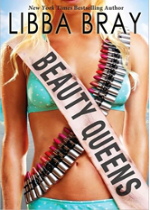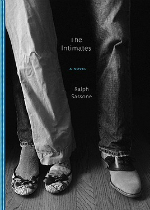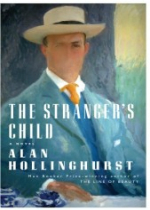Best Books 2011: Authors’ Choice
Author: Edit Team
December 25, 2011
What does it even mean, the “best” LGBTQ book(s)? Between vast discrepancies in taste, the convoluted process of publishing and marketing, and the vast amount of great LGBTQ books released this year picking a “Best of 2011” can be a tricky business. So to avoid such difficulties ourselves (yes, we are taking the easy way out this year!) we passed the buck onto several writers we know and love. Much gratitude to them for taking a crack at this.
And so, without further ado, here is a fairly inclusive list of great LGBTQ books from some of our favorite authors:
The Best LGBTQ Books of 2011:
Ellis Avery, author, The Last Nude: Here are two of my favorite LGBTQ reads of 2011: Cris Beam’s I Am J (Little, Brown, 2011), selected by Kirkus as one of their Best Books for Teens, 2011, offers a young female-to male-transgendered protagonist’s pitch-perfect song of the emerging self. Beam’s writing is lovely, deft, and utterly true to her flawed but achingly endearing hero J’s journey from loneliness and confusion into community and clarity, his shifting understanding of what hormones can do for (or to) him, his profound and complex bonds with his parents and friends, and his plain old adolescent bad judgement.
Named one of “Ten Titles to Pick Up Now” by O: The Oprah Magazine, Nina Revoyr’s Wingshooters (Akashic Books, 2011) is at once a breathtakingly beautiful hymn to the American outdoors—and to the bond between grandfather and granddaughter—and at the same time a chilling snapshot of race in this country. Wingshooters serves as a stark corrective to lazy, cozy assumptions that racism doesn’t exist in the North the way it does in the South, or that lynching ended with the Civil Rights Movement. It is also a poignant, lonely, sure-handed portrait of small-town lesbian girlhood.
Stephen Beachy, journalist and author, boneyard:
Leche by R. Zamora Linmark
The Mechanics of Homosexual Intercourse by Lonely Christopher
Ambient Parking Lot by Pamela Lu
The Ravickians by Renee Gladman
Why Aren’t You Smiling by Alvin Orloff
The Girl With Brown Fur and Other Stories by Stacey Levine
Nina Here Nor There by Nick Krieger
We the Animals by Justin Torres
The Marbled Swarm by Dennis Cooper
And if I can include one that was published at the end of 2010 I would include Inferno by Eileen Myles.
Cris Beam, young adult author, I am J : I’d have to say We The Animals by Justin Torres was my absolute favorite. Spare and gorgeous, devastating and hopeful.
Bryan Borland, poet and publisher of Sibling Rivalry Press: I suppose I have to disqualify myself from listing Sibling Rivalry Press titles, including Kevin Simmonds’ first-of-its-kind anthology (Collective Brightness: LGBTIQ Poets on Faith, Religion, and Spirituality), the long-awaited debut chapbook from Saeed Jones (When the Only Light Is Fire), Megan Volpert’s fling with Andy Warhol (Sonics in Warholia) or Gavin Dillard’s return to poetry (and love poetry at that!) alongside Eric Norris (Nocturnal Omissions: A Tale of Two Poets). And I imagine it would be impolite of me to answer with Assaracus: A Journal of Gay Poetry, which SRP launched in January and has, to date, featured substantial work from over forty contemporary gay poets. No, being the polite Southern Queen I am, I’ll instead go with Christopher Hennessy’s Love-In-Idleness (Brooklyn Arts Press) and Daniel Nathan Terry’s Days of Dark Miracles (Seven Kitchens Press), two collections that push me to be a better poet and publisher.
Dennis Cooper, author, Marbled Swarm: Here are my favorites:
Top Ten LGBTQ books of 2011 (in no order)
Wayne Koestenbaum, Humiliation (Picador)
Laurie Weeks, Zippermouth (Feminist Press)
Stephen Beachy, Boneyard (Verse Chorus Press)
Tim Dlugos, A Fast Life (Nightboat Books)
David Trinidad, Dear Prudence: New and Selected Poems (Turtle Point)
Natty Soltesz, Backwoods (Queer Mojo)
John Waters, Role Models (Farrar, Straus & Giroux)
Susie Bright, Big Sex, Little Death (Seal Press)
William E. Jones, Halsted Plays Himself (Semiotexte)
Bruce Hainley, Pep Talk (Pep Talk)
Kelli Dunham, comedian and author, The Girl’s Body Book: Everything You Need to Know for Growing Up YOU: I have one in particular: Freeing Ourselves: A Guide to Health and Self Love for Brown Bois. It’s edited by B Cole and Luna Han and published by the Brown Boi Project Collective. By now I should be accustomed to being surprised by B Cole and the Brown Boi Project. Every time I hear more about the Project, I think “that’s what queer vision looks like.” Freeing Ourselves: A Guide to Health and Self Love for Brown Bois was no exception. When the Brown Boi Project leadership program was searching for health curriculum that spoke specifically to masculine of center people of color and found nothing B Cole and her staff and many volunteers set about putting togetherFreeing Ourselves. What resulted is a beautiful (and believe me, I don’t think I’ve ever called a book beautiful) glossy, full color easy to read, comprehensive guide to all kinds of health. It intervweaves personal stories and straight forward information and covers subjects like mental health, illness and institutionalization, building resilience, getting through a pelvic exam, building a relationship with a health care provider, testeosterone and health, bathroom issues, top surgery, harm reduction and binding and nutrition. The book ends with the Brown Boi Health Manifesto which I’ve re-read a number of times. The book is full of helpful tips and also full of challenge: take care of your body, change the world.
Steven Fullwood, author and publisher of Vintage Entity Press, Funny: Of course, Marvin K. White’s two books, Our Name Be Witness and status. There be my vote.
Jewelle Gomez, author, The Gilda Stories: Here are my favorites. I don’t always read a book the year it comes out so I’m hoping I’ve put only 2011 books in!
Breaking Out of Bedlam by Leslie Larson
The Stranger’s Child by Alan Hollinghurst
Big Bang Symphony by Lucy Jane Bledsoe
As If the Empty Chair by poems (w/translations into Spanish) by Margaret Randall
Dying for a Change by Sean Reynolds
Fit to Serve by Jim Hormel
Strangely enough no vampire fiction on the list!!! I must be too busy watching True Blood.
Catherine Lundoff, editor and author, A Day at the Inn, A Night at the Palace and Other Stories: I enjoyed Connie Wilkin’s A Ride to Remember and Other Stories (erotica), L-J Baker’s Promises, Promises (fantasy), Steam-Powered: Lesbian Steampunk Stories edited by JoSelle Vanderhooft (fantasy), Libba Bray’s Beauty Queens (YA), and C.M. Harris’ Enter Oblivion(literary fiction), among others.
Ayana Mathis, author, The Twelve Tribes of Hattie (Knopf 2012): Okay, so my book. Aargh. The only one thing I can think of is Nikki Finney’s Head Off and Split, which I did enjoy immensely. Wait, wait. I did enjoy Colm Toibin’s The Empty Family. Yay! Got one.
Allison Moon, author, Lunatic Fringe :
For YA, I was impressed by the scope of Huntress by Malinda Lo.
By Nightfall by Michael Cunningham was a subtle, lovely novel!
At risk of seeming like a shill, I’ll recommend my own book which came out in October: Lunatic Fringe.
Felice Picano, author, True Stories: I liked Tom Scharbarum’s collection, The Narrows, Miles Deep, also Alvin Orloff’s novel, Why Aren’t You Smiling? and the collection Art From Artthat Stephen Soucy edited and a bit of self plugging here, I’ve gotten almost one highly favorable e-mail per week via my website so far, since my collection True Stories was published.
David Pratt, author, Bob the Book: I had been out of the gay lit loop for a while, so much of 2011 was spent catching up with the best of 2010: Tom Mendicino’s Probation, Daniel Allen Cox’s Krakow Melt, Tom Cardamone’s The Lost Library etc. One of my 2011 faves was Felice Picano’s True Stories. Felice has a knack for meeting the famous, the semi-famous, and the just plain fascinating. Some of the best True Stories involve Picano friends and family unknown to the world at large (the tale of a biking buddy identified only as “James” is sweet and devastating), while portraits of W. H. Auden, Charles Henri Ford, and Tennessee Williams also shine. There is even a true ghost story with an important life lesson. Let us hope there will be a True Stories 2.
Poet Garth Greenwell brought out his first novel, Mitko, in ’11, about an expat American teacher courting a hustler on the streets of Sofia. Greenwell closely documents the inevitable disintegration of a relationship based on mutual, though not equivalent, need.
Closer to home, Michael Graves’s debut collection, Dirty One, presents 1990s suburban life in Leominster, Massachusetts with a sharp eye and a funky, jazzy writing style. Dirty One quickly attracted much well-deserved attention. (And dig that cover!)
Two longtime favorites brought out new fiction this year. Jameson Currier followed up his wonderful Wolf at the Door with The Third Buddha, taking in war abroad, sex at home, and 9/11, integrating them in engrossing, page-turning fashion. Steve Weiner brought out his third novel, Sweet England, a vivid, funny, poignant, hallucinogenic telling of that country’s history. (The content is not gay, but, based on Weiner’s previous work, the author certainly seems to be.) Finally, in the Thrills and Chills Department, Dale Chase combined her love of Henry James and M/M action in The Company He Keeps: Victorian Gentleman’s Erotica. The book does its job most effectively; it’s best read in private! And Mark Zubro brought out a new Paul Turner mystery, Black and Blue and Pretty Dead, Too. You want to know whodunit, but, as in the best mysteries, you also care about the colorful investigators and suspects. And who can resist a corpse in an abandoned railway station with an exclusive S/M club built over it?
Paul Russell, author The Unreal Life of Sergey Nabokov: Ralph Sassone’s debut novel The Intimates is fierce, poetic and bittersweet.
Sarah Schulman, author and playwright, The Gentrification of the Mind: Inferno by Eileen Myles, Leche by R. Zamora Linmark, and Secret Historian by Justin Spring.
Metta Sama, editor and poet, South of Here: Here are my favorites:
Those Sibling Rivalry Books!
Collective Brightness edited by Kevin Simmonds. A collection of poems about the intersection between spirituality and/or religion and faith and sexuality; this collection gathers the voices of the brightest stars (emerging and established) who each approach the themes with depth, sincerity, & ingenuity.
Burnings, Ocean Vuong. A first collection (a chapbook) by a young writer whose voice is completely new, completely fresh, and completely honest in its searing, elegant, and tender gaze at a multitude of cultures and characters.
When the Only Light is Fire, Saeed Jones. A first collection (a chapbook) by a stellar new talent. Crushing and exact.
Discipline (Nightboat Books), Dawn Lundy Martin. Excruciatingly great prose poems that don’t hide behind any veneer.
Dean Spade, civil rights activist and writer, Normal Life: Some books I’ve been excited about this year: Queer (In)Justice by Ritchie, Mogul and Whitlock, Captive Genders edited by Stanley and Smith, Freedom with Violence by Chandan Reddy, and I’m excited about my own book coming out, Normal Life, which should hit stores in the next 2 weeks.
Susan Stinson, author, Venus of Chalk: The Girls Club (Bywater Books) is a wonderful novel by Sally Bellerose, who is also my close friend, so I’m more than happy to tell you that the book also been praised in Publisher’s Weekly, Library Journal, AfterEllen, and appears on the top 10 books of 2011 list in Richard Labonte’s Book Marks column. The Girls Club enters fearlessly into charged relationships between sisters and comes out laughing and dancing, a triple decker peanut butter sandwich clenched in a triumphant fist. This book is so good about family — how much it matters and how hard it can be at any given moment to bring your whole self to the people you love. It is achingly, gorgeously honest about growing up working class, Catholic and queer, and about coming out as a lesbian in a small Massachusetts city in the 1970s. Reading it, I could hear the amps from Joe’s band practicing Proud Mary in the basement and see the polka dot shorts. I particularly love how the novel explores Cora Rose’s illness, giving up secrets of the bowels and the soul in the process. Cora Rose and the people around her struggle in such human ways to control and hide the body, to keep it alive, and to be more fully one with it. The Girls Club is fun, sexy and profound.
I’ve just finished Sabina Murray’s astounding collection of short stories, Tales of the New World (Black Cat, Grove/Atlantic), which was released in November 2011, and I’m here to say that it’s flat-out brilliant. It’s a wide-ranging, lyrical, extraordinarily empathetic and scathing consideration of the inner and outer lives of explorers and those who come in contact with them. “Translation” finds Antonio Pigafetta, who is keeping a journal of an attempt to circumnavigate the globe, in love with the captain of the exposition, Ferdinand Magellan. It’s stunning in every way, and the language is like a land on fire. “Fish” is a terrific long story based on the life of Victorian English writer and explorer Mary Kingsley, who, in Murray’s telling, is visited by rather nasty little fairies and fords rivers in her full skirts. In “The Solace of Monsters,” a nineteenth century whale ship captain reads Frankenstein in his cabin at night. In “Last Days,” Nezahualpilli, who is a seer and the ruler of Texcoco, meets with the king of the Aztecs, Motecuhzoma, not long before the king’s fateful encounter with Cortés. The range of history, geography and imagination here is dazzling, and the stories spin a reader’s assumptions in gripping, beautifully unsettling ways.
Another book I loved in 2011 is Recruiting Young Love: How Christians Talk about Homosexuality (University of Chicago Press) by Mark D. Jordan. Jordan, who is the Richard Reinhold Niebuhr Professor of Divinity at Harvard Divinity School, is a supple, witty writer whose work is a great pleasure to read. In considering the language and “characters” that Christian rhetoric has used for same-sex desire since the Kinsey Report appeared in 1948, he makes clear that “…church debates over this desire have been conducted almost entirely in hastily borrowed language. Christian writer have appropriated clinical terminology from modern sexology or psychiatry, the political coinage of social reformers, and slang devised for urban enclaves.” Jordan considers the work of figures such as G. Stanley Hall, Havelock Ellis, Alfred Kinsey, but he also gives tender, witty attention to Richard Meeker’s 1934 novel Better Angel, Richard Amory’s 1966 pulp novel, Song of the Loon, and, memorably, Anita Bryant’s rhetorical heart. Jordan writes about Christianity with a clarity and commitment that create breathtaking openings: “However much it chases after the ideology of the modern state, Christianity remains a repository for archaic, transgressive characters of desire and gender. They are inscribed into its scriptures, especially in the person of its founder….Many churches labor to enforce a dominant moralism, but they inevitably perform a Gospel with a surplus of other possibilities – other characters.” Jordan’s invitation to take the religion up on those other possibilities seriously is a beautiful thing.
Charlie Vazquez, author, Contraband: Chulito by Charles Rice-Gonzalez
John Weir, author, What I Did Wrong: At the end of 2011, having failed to read a new queer book all year, I stumbled upon Judith Halberstam’s The Queer Art of Failure (Durham & London: Duke University Press), which is sublimely successful in advocating “counterintuitive modes of knowing such as failure and stupidity.” My two favorite modes of knowing! And how can you not love a book that claims, “If you watch Dude, Where’s My Car? slowly and repeatedly. . . the mysteries of the universe will be revealed to you?” It’s a swell book that queers the animated films of Pixar and Dreamworks while celebrating the history of failed queer intervention in various political and social regimes. And it offers a much-needed and cogent alternative to “triumphalist accounts of gay, lesbian, and transgender history that necessarily reinvest in robust notions of success and succession.” Occupy failure!
Edmund White, author, Sacred Monsters: My favorite novel was Alan Hollinghurst’s A Stranger’s Child.






















